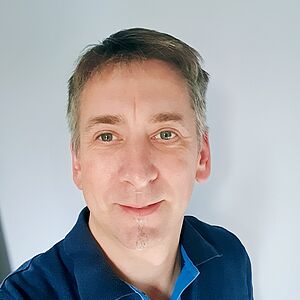
Christophe Dujardin
Research Activities
Graduated in 1998 with a Master's degree in Materials Sciences from the University of Caen, I obtained my doctorate in theoretical, physical and analytical chemistry in 2002 under the direction of Dr. Françoise Maugé (CNRS) in collaboration with Dr. Jacob Van Gestel and Professor Jean-Claude Duchet. My thesis subject focused on the “Characterization of hydrotreatment catalysts by model reactions and infrared spectroscopy: Contribution to the understanding of operation on real load”. From 2001 to 2002, I worked as an International Corporate Volunteer at Atofina Research S.A. (Feluy, Belgium). I then joined the Laboratory of Catalysis (Lille) as Temporary Teaching and Research Associate and then Lecturer in the Catalysis and Solid State Chemistry Unit. I defended my Habilitation to Direct Research from the University of Lille 1 entitled “Contribution of spectroscopic tools to the understanding of catalytic processes for the reduction of nitrogen oxide emissions” on December 7, 2012. I joined as of September 1, 2014, ENSCL (which became an internal school of Centrale Lille Institut in 2020) as University Professor.
Research Activities
Christophe Dujardin is co-author of numerous scientific articles of rank A in the field of heterogeneous catalysis applied to the elimination of atmospheric pollutants (NOx, N2O) as well as in the use of spectroscopies for the understanding of catalytic phenomena. My research activities have been devoted to the elimination of nitrogen oxides from stationary or mobile sources using heterogeneous catalysts. Improving the understanding of the functioning of catalysts is facilitated by the use of Infrared spectroscopy in operando conditions. The catalytic properties of new catalysts are studied under conditions very close to real application conditions. More recently I am developing the use of isotopic exchange methods in stationary conditions (SSITKA-IR) for a better definition of the role of the species adsorbed during the reaction.
Research themes:
- Evaluation of new catalytic formulations in pollution control (mainly NOx)
- Correlations between the physicochemical properties of catalytic surfaces and their performances (activity and selectivity)
- Understanding the mode of operation of catalysts through spectroscopic measurements in in situ and operando mode (FTIR, Raman, XPS)
- Spectrokinetic analysis and reaction modeling
- SSITKA analysis
- Vibrational spectroscopy for the synthesis of compounds of interest



